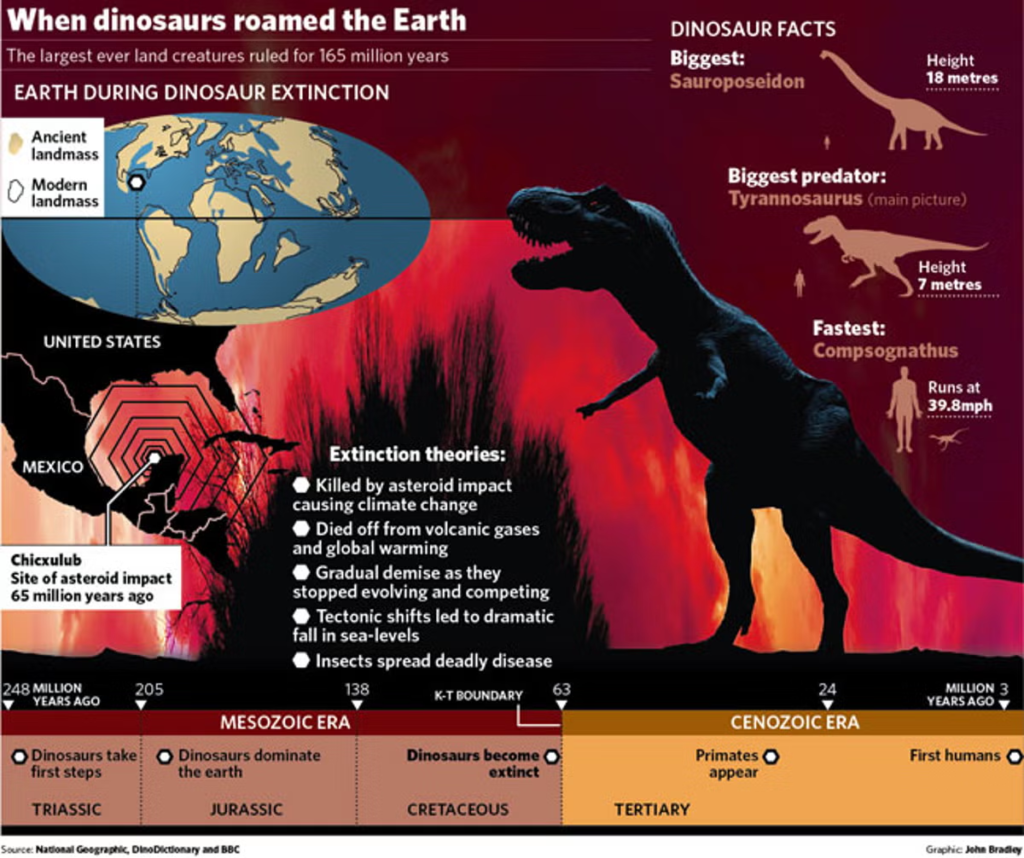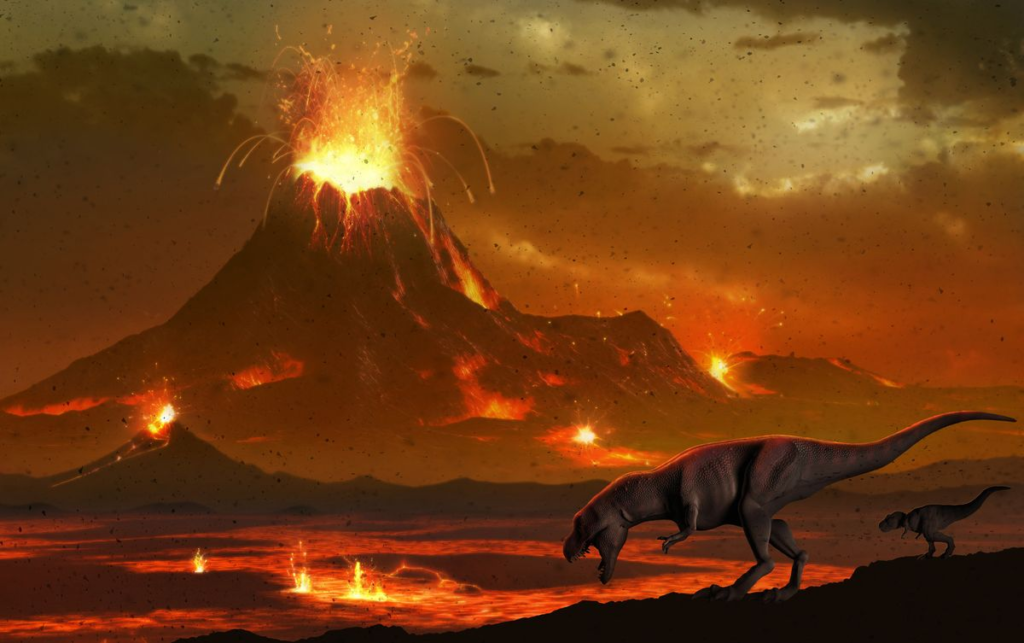Intriguing Stories of dinosaurs Extinction
Dinosaurs have always held a mysterious allure, captivating the imaginations of both young and old alike. These colossal creatures once roamed the Earth, dominating the planet for millions of years. However, their sudden disappearance has left scientists puzzled for generations. In this article, we will delve deep into the mystery of dinosaurs’ extinction. Uncovering the scientific insights and theories that shed light on this enigmatic event.

The Age of dinosaurs: A Glimpse into the Past
Before we embark on our journey to understand their extinction. Let’s first take a step back in time and explore the magnificent world of dinosaurs. These awe-inspiring creatures ruled the Earth during the Mesozoic Era, which spanned over 180 million years. They came in various shapes and sizes, from the towering Tyrannosaurus rex to the graceful Brachiosaurus.
The Cataclysmic Event: Asteroid Impact Theory of dinosaurs
One of the most widely accepted theories explaining the extinction of dinosaurs is the asteroid impact theory. According to this hypothesis, approximately 66 million years ago, a massive asteroid, nearly 6 miles in diameter, collided with Earth. This catastrophic event led to a chain reaction of environmental disasters.
The impact caused wildfires, tsunamis, and a “nuclear winter” effect. Where debris and dust from the impact clouded the atmosphere, blocking sunlight for an extended period. This darkness disrupted the food chain, causing a global collapse of ecosystems. As a result, many species, including the dinosaurs, struggled to survive in this harsh, post-impact environment.

The Deccan Traps: A Volcanic Eruption Theory dinosaurs
Another compelling theory suggests that volcanic activity played a significant role in the demise of dinosaurs. The Deccan Traps, a massive volcanic region in present-day India. Experienced a series of colossal eruptions during the Late Cretaceous period.
These eruptions spewed vast amounts of lava, gases, and ash into the atmosphere, leading to dramatic climate changes. The release of greenhouse gases, such as sulfur dioxide, could have caused a substantial global warming effect. The resulting climate fluctuations would have put immense pressure on the survival of dinosaur populations, ultimately contributing to their extinction.

Changing Sea Levels and Continental Drifts
While the asteroid impact and volcanic eruption theories are prominent explanations. Other factors may have played a part in the extinction of dinosaurs. Geological evidence suggests that shifting continents and changing sea levels could have altered habitats and disrupted ecosystems. These environmental transformations would have posed additional challenges for the survival of these ancient reptiles.

Conclusion: The Multifaceted End of Dinosaurs
In conclusion, the mystery of how dinosaurs met their demise remains a multifaceted puzzle with several interconnected pieces. While the asteroid impact and volcanic eruption theories dominate the discourse, it’s essential to acknowledge the complexity of Earth’s history during the Mesozoic Era. The convergence of these various factors, from celestial collisions to volcanic upheavals, likely contributed to the extinction of these majestic creatures.
As we continue to unearth new evidence and refine our understanding of Earth’s ancient past, the story of dinosaurs’ extinction remains one of science’s most captivating enigmas, reminding us of the ever-evolving nature of our planet’s history.
FAQ
Q1: What caused the extinction of dinosaurs?
A1: The leading theories suggest that a combination of factors contributed to the extinction of dinosaurs. The most widely accepted theories include the asteroid impact theory, volcanic eruptions (Deccan Traps), and environmental changes due to shifting continents and sea level fluctuations.
Q2: When did the extinction of dinosaurs occur?
A2: The extinction event that wiped out the dinosaurs is commonly believed to have occurred approximately 66 million years ago during the Cretaceous-Paleogene (K-Pg) boundary.
Q3: What is the asteroid impact theory?
A3: The asteroid impact theory proposes that a massive asteroid, nearly 6 miles in diameter, collided with Earth, causing catastrophic environmental changes, such as wildfires, tsunamis, and a “nuclear winter” effect, ultimately leading to the extinction of dinosaurs.
Q4: Can you explain the Deccan Traps theory in more detail?
A4: The Deccan Traps theory suggests that extensive volcanic eruptions in the Deccan Traps region of India released large amounts of lava, gases, and ash. This volcanic activity may have contributed to climate changes, including global warming, which could have had a significant impact on dinosaur populations.
Q5: Were there other factors besides the asteroid impact and volcanic eruptions? A5: Yes, besides the asteroid impact and volcanic activity, shifting continents and changing sea levels are believed to have played a role in disrupting ecosystems and habitats, adding to the challenges faced by dinosaurs.

